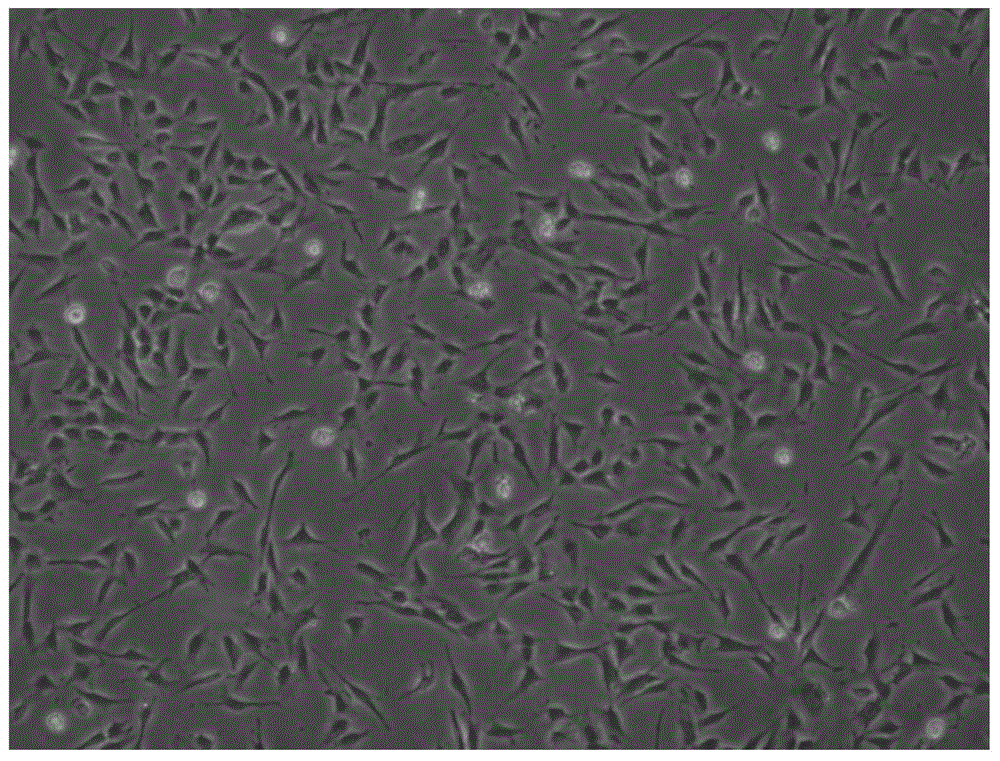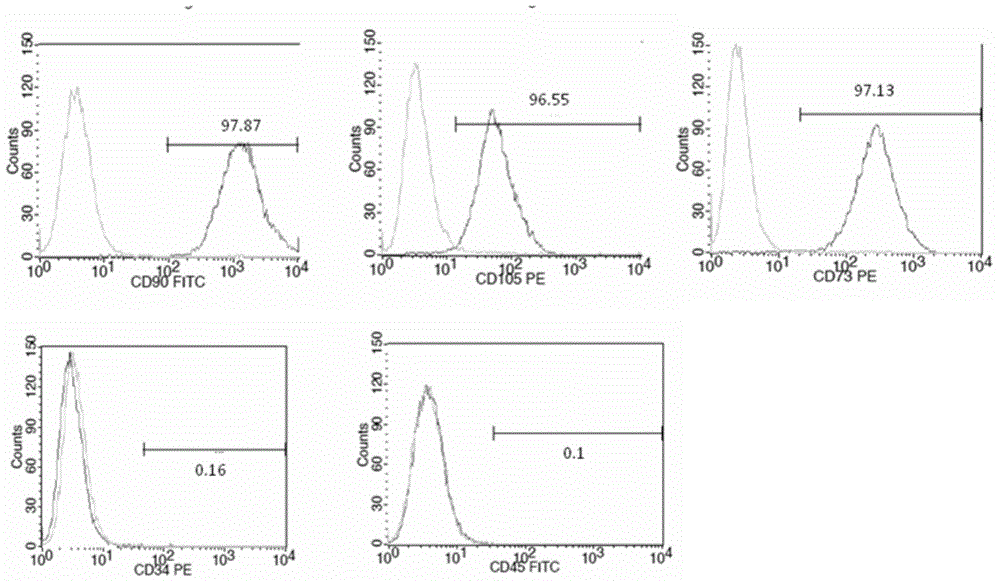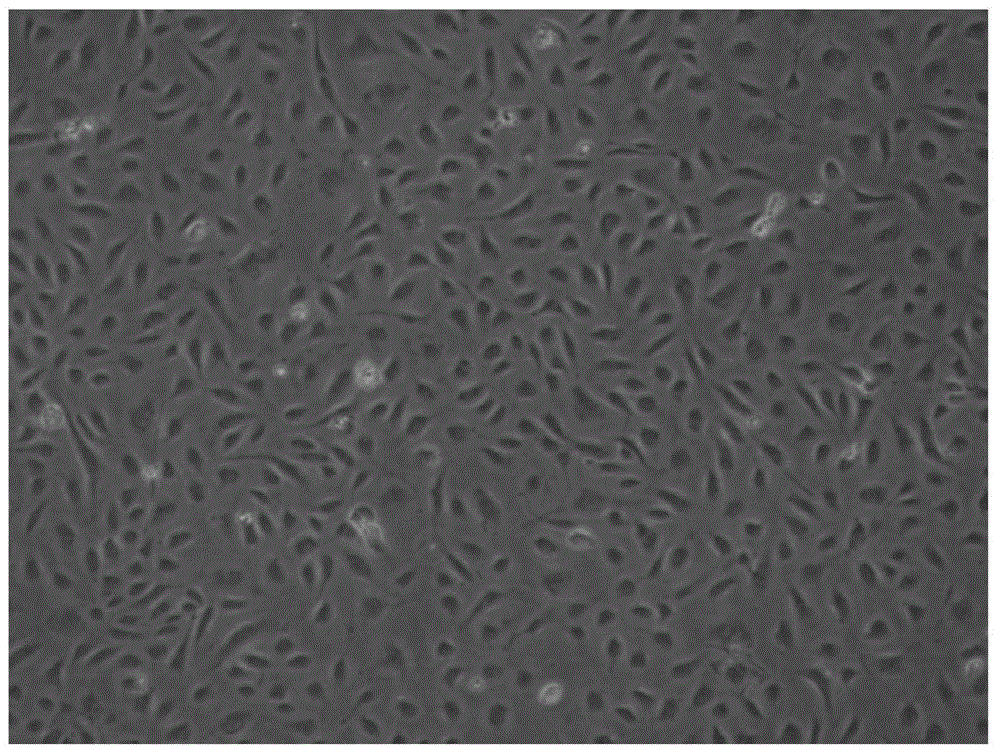Method for improving proliferation ability and performance of umbilical cord blood OECs (outgrowth endothelial cells)
An endothelial cell proliferation and endothelial cell technology is applied in the field of improving the proliferation ability and performance of umbilical cord blood outwardly growing endothelial cells to achieve the effects of increasing the number of cells, improving the therapeutic effect and reducing the amount of cells
- Summary
- Abstract
- Description
- Claims
- Application Information
AI Technical Summary
Problems solved by technology
Method used
Image
Examples
Embodiment 1
[0054] Umbilical cord blood and umbilical cord specimens were obtained from placentas delivered by healthy puerperas through aseptic procedures. The tests of hepatitis B, hepatitis C, syphilis, AIDS, cytomegalovirus, TORCH, mycoplasma, chlamydia, G-6PD and thalassemia were all negative. After the specimens were collected, they were transported back to the blood bank to maintain the transport conditions at 4-8°C. Follow the method below.
[0055] 1. Preparation of umbilical cord mesenchymal stem cells
[0056] Mesenchymal stem cells are extracted from the umbilical cord tissue of healthy people, and the obtained mesenchymal stem cells are cultured and expanded in vitro. After the primary cells were collected, they were subcultured at a ratio of 1:3. When the cells covered the bottom of the bottle with a density of about 80%, they were digested and collected with trypsin, and subcultured at the same ratio, up to the third generation. Collect the cells of the 3rd generation. A...
Embodiment 2
[0087] With reference to the method of Example 1, the collected endothelial cells were adjusted to a density of 1 × 10 with endothelial cell culture medium. 5 cells / mL, marked as cell suspension A; the collected mesenchymal stem cells were adjusted to a density of 1×10 5 Cells / mL, marked as cell suspension B, take 2 mL each of cell suspension A and cell suspension B and add to 6 mL endothelial cell culture medium, that is, the mixed group.
[0088] At the same time, the endothelial cell group was defined as the OEC group, the mesenchymal stem cell group was defined as the MSC group, and 2 mL of cell suspension A was added to 8 mL of endothelial cell culture medium in the OEC group. In the MSC group, 2 mL of cell suspension B was added to 8 mL of endothelial cell culture medium.
[0089] The three groups were respectively added to T75 culture flasks pre-plated with collagen for culture.
Embodiment 3
[0092] Referring to the method of Example 2, the cells were harvested after 4 days, and the harvested cells were counted, and the amount of cells in the three groups was compared, and the multiplication factor was calculated using the following formula.
[0093] Multiplication factor = Harvested cell volume / Inoculated cell volume
[0094] The results are shown in Table 1: the cell proliferation rate of the mixed group was higher than that of the endothelial cell group and the mesenchymal stem cell group, and the difference was statistically significant, meeting the requirements for rapid expansion in this application.
[0095] Table 1
[0096]
PUM
 Login to View More
Login to View More Abstract
Description
Claims
Application Information
 Login to View More
Login to View More - Generate Ideas
- Intellectual Property
- Life Sciences
- Materials
- Tech Scout
- Unparalleled Data Quality
- Higher Quality Content
- 60% Fewer Hallucinations
Browse by: Latest US Patents, China's latest patents, Technical Efficacy Thesaurus, Application Domain, Technology Topic, Popular Technical Reports.
© 2025 PatSnap. All rights reserved.Legal|Privacy policy|Modern Slavery Act Transparency Statement|Sitemap|About US| Contact US: help@patsnap.com



